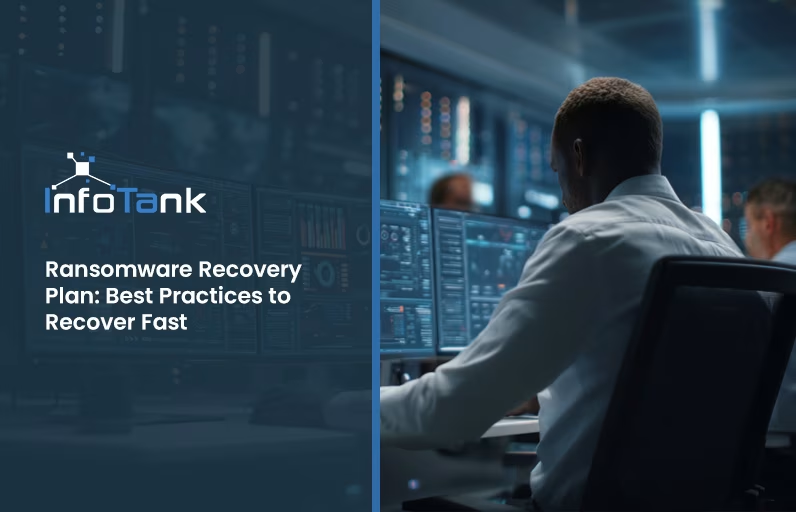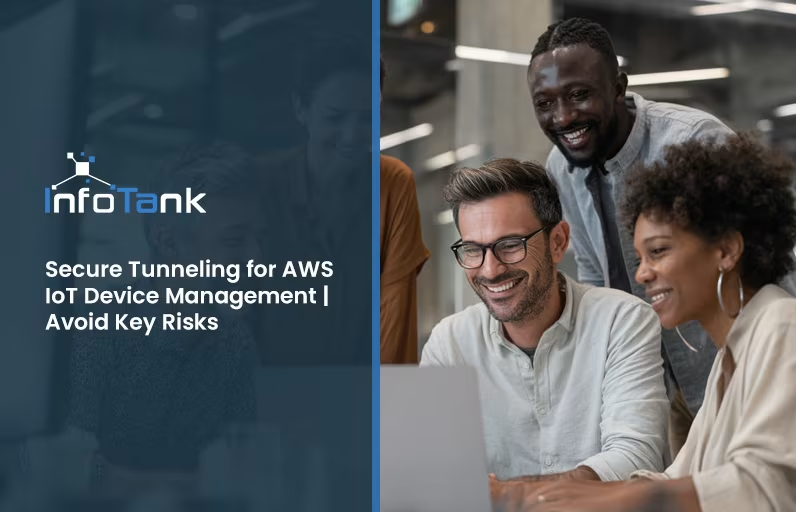
6 Best Practices When Deploying Endpoint Detection and Response
In today's digital-first landscape, cybersecurity has catapulted from being a mere afterthought to a frontline defense mechanism. The rapid digitalization of business operations, the surge in remote work, and the constant evolution of cyber threats have all heightened the need for robust, reliable, and responsive security measures. Among these, endpoint detection and response (EDR) plays a starring role.
EDR, or "endpoint threat detection and response," is a critical component of modern cybersecurity strategies. It's the watchful eye that constantly monitors and analyzes endpoint data to identify potential threats, providing a swift and effective response to any detected incidents. According to a prediction by Gartner, by the end of 2023, over 50% of enterprises will have replaced older antivirus products with combined endpoint protection platforms and EDR solutions that supplement prevention with detection and response capabilities. With that said, deploying EDR isn't just a matter of plug-and-play; it requires careful consideration and thoughtful strategy. So, how do you go about it? That's exactly what we'll dive into in this post as we explore the six best practices when deploying EDR. Stick around, and let's uncover the secrets to effective EDR deployment together.

What is Endpoint Detection and Response?
So, what is endpoint detection and response? Let's break it down. At its core, EDR is like your organization's own cybersecurity detective. It's constantly on the lookout for potential threats, analyzing data from each endpoint in your network—be it a laptop, smartphone, or server—to identify anything unusual or suspicious.
EDR packs a lot of muscle when it comes to keeping your IT environment secure. Here are its primary functions and benefits:
- Real-time Monitoring: EDR is always on, keeping a vigilant eye on all endpoint activities. This means it's ready to spot and flag any signs of trouble at any hour of the day or night.
- Threat Detection: EDR doesn't just monitor—it actively looks for signs of potential threats, using advanced algorithms and threat intelligence to identify unusual or malicious behavior.
- Incident Response: Once a threat is detected, EDR jumps into action. It can isolate affected endpoints to prevent the spread of threats and even help in the remediation process.
But why is EDR so crucial? Well, in the digital age, cyber threats are a real and present danger. With a diverse range of devices connecting to your network—each a potential entry point for cyber threats—having an effective EDR solution is a bit like having a digital doorman, ensuring only the right kind of traffic gets through. Moreover, EDR doesn't just prevent cyber threats; it helps your organization respond swiftly and effectively when incidents occur, minimizing potential damage and downtime. The bottom line? If you're serious about cybersecurity, you can't afford to overlook EDR.
The Importance of EDR in a Managed IT Environment
EDR isn't just a standalone tool—it's a critical piece of the puzzle in a managed IT environment. You see, managed IT services involve a holistic approach to maintaining an organization's technology infrastructure. This includes managing networks, servers, databases, and, of course, ensuring top-notch security. And here's where EDR steps in, or should we say, stands guard.
In a managed IT environment, EDR serves as a vigilant sentinel, constantly monitoring, detecting, and responding to threats at the endpoint level. The role of "managed endpoint detection and response" is essentially to enhance the overall security posture of an organization. It complements other security measures, working in sync with them to create a comprehensive shield against cyber threats. It’s like a well-tuned orchestra—with each instrument playing its part to create a harmonious symphony of protection. With EDR in place, not only can your organization prevent cyber threats, but it's also better equipped to respond swiftly and effectively if a threat does manage to breach your defenses. This ensures minimal disruption to your operations and maintains the trust of your customers and stakeholders. So, when it comes to a managed IT environment, EDR isn't just important—it's indispensable.
The Best Practices When Deploying Managed Endpoint Detection and Response
1. Prioritize Comprehensive Coverage
Deploying managed endpoint detection and response isn't just about having the system in place—it's about making sure it covers your entire network. Think of it like setting up security cameras; having one at the front door is great, but what about the back door, windows, and other potential entry points? The same principle applies to EDR. Every endpoint in your network—be it a computer in the office, a remote worker's laptop, or a mobile device—should fall within the purview of your EDR system. This comprehensive coverage ensures no potential threat slips through the cracks, helping you maintain a secure IT environment.
2. Ensure Proper Configuration and Maintenance
Just like a high-performance sports car, your EDR system needs to be properly configured and regularly maintained to perform at its best. This means tailoring the system settings to align with your specific needs and regularly updating it to incorporate the latest threat intelligence and security features. Remember, an EDR system is only as good as its latest update. Regular maintenance also helps you identify and rectify any issues or vulnerabilities, ensuring your EDR system remains a robust line of defense against cyber threats.
3. Invest in Staff Training
Deploying an EDR system is a significant step towards bolstering your organization's cybersecurity. But remember, the system is only as effective as the people who use it. Investing in thorough staff training ensures your team understands how to leverage the EDR system's capabilities to their fullest extent. This includes knowing how to interpret the system's alerts and reports, respond to detected threats, and maintain the system effectively. The more familiar your team is with the EDR system, the better equipped they'll be to protect your organization from cyber threats.
4. Perform Regular Testing
You wouldn't drive a car without regular check-ups, would you? Likewise, regular testing is a must when it comes to your EDR system. Testing helps ensure that your EDR system is functioning as expected and allows you to identify any areas for improvement. This could involve running simulated attacks to test your system's detection and response capabilities or performing system checks to ensure all endpoints are properly covered. Regular testing keeps your EDR system sharp and effective, ready to face whatever cyber threats come its way.
5. Integrate EDR with Other Security Measures
Security, like many good things in life, works best in layers. Integrating your EDR system with other security measures can create a more robust and holistic defense strategy. For instance, pairing EDR with a strong firewall or a secure network access control (NAC) system can enhance your overall security posture. Think of it as a team effort—each security measure plays its part, and together, they create a formidable defense against cyber threats.
6. Partner with a Trusted EDR Provider
Last but definitely not least, it's crucial to partner with a trusted EDR provider. A reliable provider can assist with everything from initial deployment and configuration to ongoing maintenance and support. They bring a wealth of expertise and experience to the table, helping you navigate the complex world of cybersecurity with ease. But remember, choosing a provider isn't just about capabilities—it's about trust. You want a partner who values your security as much as you do, so do your homework and choose a provider with a strong track record in the field of managed endpoint detection and response.

Conclusion
Alright, folks, let's wrap it up. We dove deep into the world of Endpoint Detection and Response (EDR) and unpacked its importance in a managed IT environment. We highlighted the need for comprehensive coverage, proper configuration, and maintenance, as well as staff training. We also emphasized the importance of regular testing, integration with other security measures, and partnering with a trusted EDR provider.
All of these are best practices that can transform your EDR deployment from good to great. Remember, it's not just about having an EDR system in place—it's about leveraging it effectively to safeguard your organization's digital assets.
But here's the thing, we get it—navigating the intricacies of EDR can feel like a tightrope walk, especially if you're juggling other responsibilities. That's where partnering with a Managed Service Provider (MSP) like InfoTank can make a world of difference. Our team of experts can guide you through the entire process, from initial deployment to ongoing maintenance, ensuring you get the most out of your EDR system.
So, why wait? Reach out to InfoTank today and take the first step towards a more secure tomorrow. It's time to put these best practices into action and fortify your organization's cybersecurity posture. After all, in the digital world, security isn't just a nice-to-have—it's a must.



